.300 Dakota
Well-Known Member
The Sauer 100 I took out to test awhile back that was bought online for new but had clearly been shot has gotten a huge upgrade. On the range, after cleaning up, I found the 7mm Remington Magnum to shoot abysmal groups. 3" with Berger 168 grain VLDs and half that, 1 1/2", with 160 grain Nosler Ballistic Tips. The trigger was atrocious. I thought I might have to attach my truck winch to it with the rifle strapped in a Lead Sled to get it to go off.
When fired, the punches I took to the collarbone area were akin to what Tyson Fury would dish out if he had time to load up with a set of brass knuckles. I thought I may have had a hairline crack in the days following with the large goose egg that formed. Overall, it was one of the worst experiences I'd ever had with a "new rifle."
I was advised to get rid of it and cut my losses. Somehow, all I could think about was the poor guy who'd be the next owner. Nope. I couldn't in good conscience turn this headache (shoulderache?) loose on the unsuspecting public at large the way it was unleashed on me. Instead, I got online on Boyd's Gun Stocks Web site and started a redesign. I started with a laminate wood base, which generally digests some of the perceived recoil. I chose the Monte Carlo design to prevent the punch from coming straight back to the shoulder. Finally, I selected a Kick-EEZ recoil pad, which is one of the best money can buy. Lastly, the Boyd's laminate adds a small amount of weight over the hollow plastic atrocity that was shipped attached to the barrel action. Weight mitigates recoil via the laws of physics.
To make shooting a more enjoyable experience, I added a few embellishments to the design. I added a glossy finish that will look very nice in person with the action and barrel once I oil and polish them up. There is also scaling added to the grip and side forearm areas in an artistic deer theme. Not only does it provide a unique and striking appearance, but it promotes a positive purchase between hand and wood.
Finally, a 1.5mm allen wrench was used to externally adjust the trigger pull weight down to a modest 2 pounds of pull. This is a feature not found on any other production rifle save for the Savage Accu-Trigger which can't hold a candle to a tuned Sauer.
The true test will be to remake the loads in question and return to the range. The Boyd's stock was not an easy install. The tolerances had to be so precise for proper fit that I'm surprised they got it so close- nearly perfect. I had to polish a few thousandths of an inch off the first drop off in the tang area where the back of the trigger housing fit. I had to do a minor amount of sanding where the barrel contour reduced in sporter fashion - about 2" forward of the action. It took wiggling and rocking back and forth for a solid hour to get the stock to fit properly back on the barreled action, but it's now there!
The Sauer is designed unlike any American rifle. There is a small aluminum block that is used for front bedding on the original stock, and a stack of thin washers in a particular arrangement on the back action screw - almost acting as a pillar that has been carefully sliced into ultra-thin pieces. That block also has a machined-in recoil interface with a slot cut in the action similar to a Savage Axis. The block is epoxied into the stock and a floating screw proceeds from the bottom to the barreled action just ahead of the recoil lug slot to act as a reverse front action screw. Instead of a screw being inserted in the bottom through a hole to screw into the action, a 10mm nut about 5/8" long is screwed onto this floating bolt ticking downward through the action screw hole. There is negative clearance for a socket to fit, so there is some work involved just to get a wrench on the nut to begin to tighten or loosen it. It was impossible to tell how much torque I was putting on the nut, but I got it solidly in place before relacing the bottom metal and finagling the rear screw into place. There is a front screw that holds the trigger guard in place that engages the outside end of the 5/8" nut. This completes a 2-way pull of force on the front screw system, which, no doubt, contributes to the steadfastness of the system. German engineering at its best!
We'll see what we look like on the range soon! I'm hoping my goodwill towards men in fixing the problem(s) (hopefully) instead of passing them off will bring good fortune.
When fired, the punches I took to the collarbone area were akin to what Tyson Fury would dish out if he had time to load up with a set of brass knuckles. I thought I may have had a hairline crack in the days following with the large goose egg that formed. Overall, it was one of the worst experiences I'd ever had with a "new rifle."
I was advised to get rid of it and cut my losses. Somehow, all I could think about was the poor guy who'd be the next owner. Nope. I couldn't in good conscience turn this headache (shoulderache?) loose on the unsuspecting public at large the way it was unleashed on me. Instead, I got online on Boyd's Gun Stocks Web site and started a redesign. I started with a laminate wood base, which generally digests some of the perceived recoil. I chose the Monte Carlo design to prevent the punch from coming straight back to the shoulder. Finally, I selected a Kick-EEZ recoil pad, which is one of the best money can buy. Lastly, the Boyd's laminate adds a small amount of weight over the hollow plastic atrocity that was shipped attached to the barrel action. Weight mitigates recoil via the laws of physics.
To make shooting a more enjoyable experience, I added a few embellishments to the design. I added a glossy finish that will look very nice in person with the action and barrel once I oil and polish them up. There is also scaling added to the grip and side forearm areas in an artistic deer theme. Not only does it provide a unique and striking appearance, but it promotes a positive purchase between hand and wood.
Finally, a 1.5mm allen wrench was used to externally adjust the trigger pull weight down to a modest 2 pounds of pull. This is a feature not found on any other production rifle save for the Savage Accu-Trigger which can't hold a candle to a tuned Sauer.
The true test will be to remake the loads in question and return to the range. The Boyd's stock was not an easy install. The tolerances had to be so precise for proper fit that I'm surprised they got it so close- nearly perfect. I had to polish a few thousandths of an inch off the first drop off in the tang area where the back of the trigger housing fit. I had to do a minor amount of sanding where the barrel contour reduced in sporter fashion - about 2" forward of the action. It took wiggling and rocking back and forth for a solid hour to get the stock to fit properly back on the barreled action, but it's now there!
The Sauer is designed unlike any American rifle. There is a small aluminum block that is used for front bedding on the original stock, and a stack of thin washers in a particular arrangement on the back action screw - almost acting as a pillar that has been carefully sliced into ultra-thin pieces. That block also has a machined-in recoil interface with a slot cut in the action similar to a Savage Axis. The block is epoxied into the stock and a floating screw proceeds from the bottom to the barreled action just ahead of the recoil lug slot to act as a reverse front action screw. Instead of a screw being inserted in the bottom through a hole to screw into the action, a 10mm nut about 5/8" long is screwed onto this floating bolt ticking downward through the action screw hole. There is negative clearance for a socket to fit, so there is some work involved just to get a wrench on the nut to begin to tighten or loosen it. It was impossible to tell how much torque I was putting on the nut, but I got it solidly in place before relacing the bottom metal and finagling the rear screw into place. There is a front screw that holds the trigger guard in place that engages the outside end of the 5/8" nut. This completes a 2-way pull of force on the front screw system, which, no doubt, contributes to the steadfastness of the system. German engineering at its best!
We'll see what we look like on the range soon! I'm hoping my goodwill towards men in fixing the problem(s) (hopefully) instead of passing them off will bring good fortune.
Attachments
-
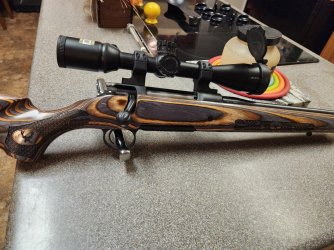 20231023_221507.jpg446.6 KB · Views: 68
20231023_221507.jpg446.6 KB · Views: 68 -
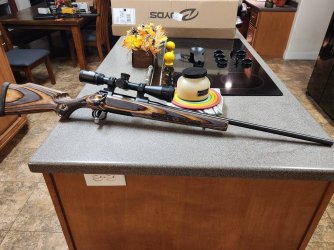 20231023_222610.jpg417.5 KB · Views: 66
20231023_222610.jpg417.5 KB · Views: 66 -
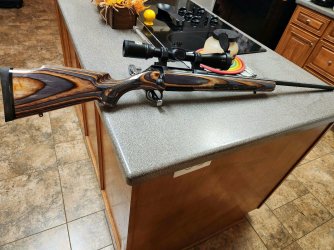 20231023_220915.jpg419.1 KB · Views: 65
20231023_220915.jpg419.1 KB · Views: 65 -
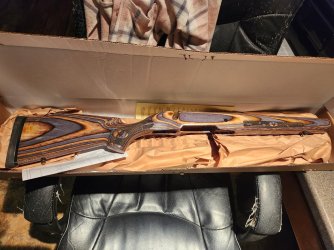 IMG_20231023_194701.jpg347.8 KB · Views: 54
IMG_20231023_194701.jpg347.8 KB · Views: 54 -
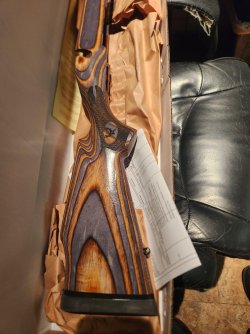 IMG_20231023_194735.jpg265.1 KB · Views: 98
IMG_20231023_194735.jpg265.1 KB · Views: 98 -
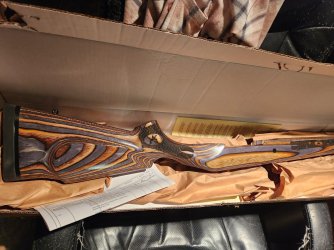 IMG_20231023_194820.jpg309.5 KB · Views: 60
IMG_20231023_194820.jpg309.5 KB · Views: 60 -
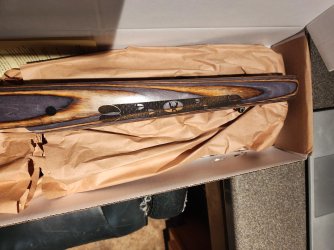 IMG_20231023_194752.jpg266.8 KB · Views: 62
IMG_20231023_194752.jpg266.8 KB · Views: 62
